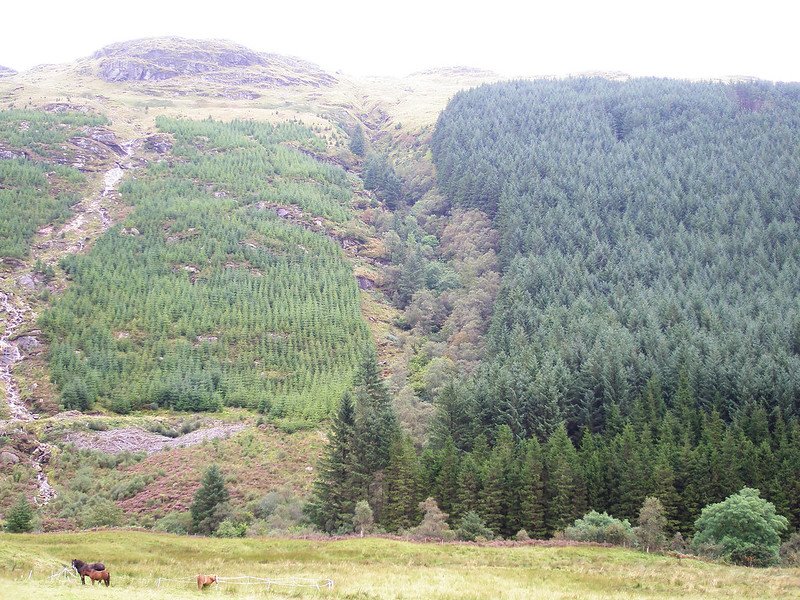Plantations on ancient woodland sites (PAWS)
Around 6,500 ha (roughly 20%) of ancient woodland sites in the core area of Scotland’s rainforest have been planted with non-native conifers, and there are another 8,500 ha of PAWS, elsewhere in the rainforest zone.
Restoring PAWS is particularly important because remnants of the ancient woodland often persist, and the soil biodiversity is also usually still relatively intact. Some bryophytes and lichens may also have survived in small stands of ancient woodland or on boundary trees. These might then colonise sensitively restored native woodland.
Read the guidance notes looking at how to tackle PAWS on your property provided by The Woodland Trust and Forest Research.
Initial consultation with a bryologist and/or lichenologist will inform what rainforest biodiversity you have in your ancient woodland remnants and help you plan the best approach for PAWS restoration on your property. They will also be able to advise on a monitoring strategy.
Ensure herbivore impact is Low as set out in the Woodland Herbivore Impact Assessment.
Regular follow-up monitoring (WHIA and habitat condition) and management will be necessary to ensure that herbivore impacts are at the right level and self-seeded exotic conifers and beech are not becoming established in cleared areas (refer to Plantlife’s Rapid Rainforest Assessment and survey form). Widespread dense thickets of native species such as birch, for example, may also be undesirable where they could overshade old native trees with notable lichens. Conifer removal and control of excessive regeneration of native species is most cost effective and least damaging when trees are still young.
Where there has been dense regeneration of native trees (often birch) the woodland may benefit from some re-spacing at an early stage. This can improve habitat for epiphytic bryophytes and lichens by introducing some spatial diversity and opening-up the woodland around scarcer tree species and around those older trees with multiple niches, such as forks and twisted boles, for example.
Conservation grazing with cattle and/or sheep of former PAWS is another option. Appropriate grazing level should be determined by factors such as forage availability, type of livestock, nature of the terrain and desired impact, for example. Monitoring impacts would be essential to guide effective livestock management and control. There are many areas of PAWS where livestock grazing is not practical.



